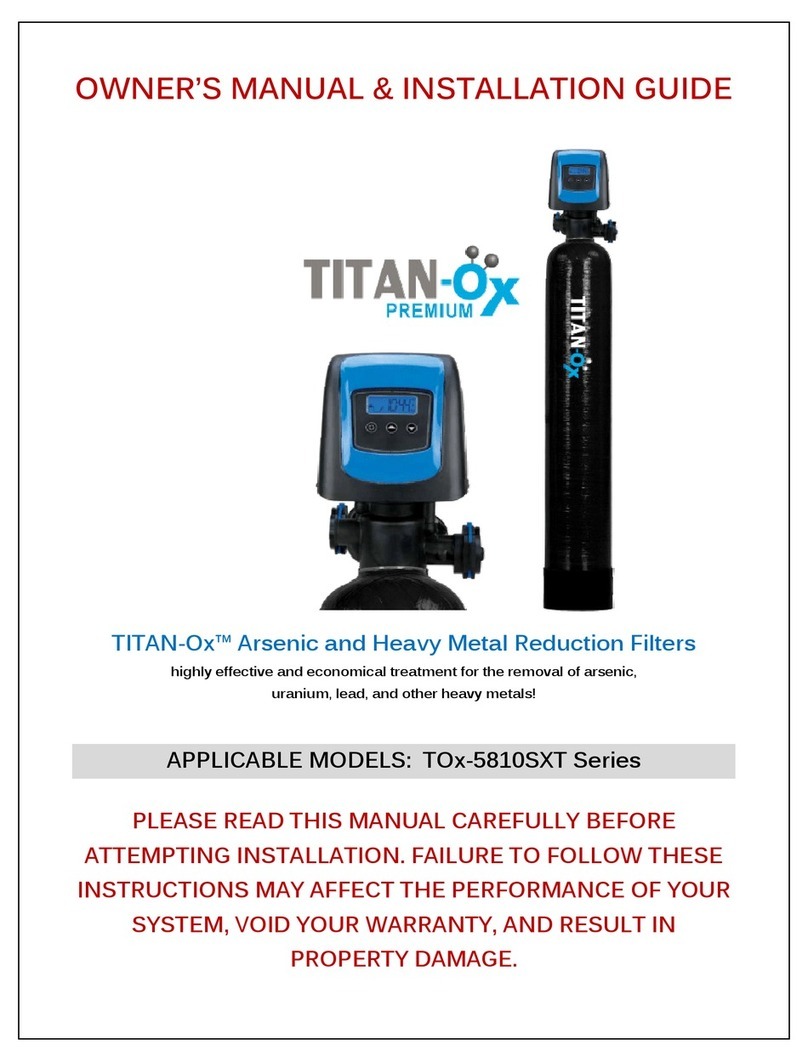
10
Once this is complete, add the KDF 55 Media next (marked Media #2) in the same manner.
Use all of the KDF 55 media provided.
Next, add the oconut Shell Activated arbon (marked Media #3) in the same manner. Use
all of the media provided. Using a small scoop to add the media slowly will help reduce
dust.
Finally, add the atalytic arbon (marked Media #4) and Inert Beads (marked Media #5) in
the same manner. Use all of the media provided.
Depending on the capacity of the system, there will only be enough media to fill the tank to
about 1/2 to 3/4 full. This is normal. The media tank should never be filled to the top of the
tank as the remaining space, known as the “freeboard,” is necessary for the media to have
room to expand during the service cycle.
Once you have finished adding the media to the tank, remove the tape from the distributor
tube. Be careful not to pull upwards on the riser tube while doing this as it is important that
the distributor remain in its recess at the bottom of the tank.
Fill the media tank with water up to within a couple of inches of the top of the tank. This will
allow the media to pre-soak, thereby preventing media loss during the initial backwash.
Apply a small amount of lubricant to the top inch of the outside of the riser tube and to the
large o-ring seal on the bottom of the ecoPLUS™ Valve Head. Note: Only use food-grade
silicone lubricant. A small tube of lubricant is provided in the small parts bag. Do NOT
use petroleum jelly.
The ecoPLUS™ Valve Head can now be secured to the top of the tank. Before attaching the
Valve Head, check to make sure that there is no debris such as gravel or media in the tank
threads. Screw the Valve Head onto the tank – make sure that the riser tube inserts into the
center hole in the upper screen and the control valve as you screw down the valve. The
control valve should be hand-tightened (clockwise). A firm grasp with both hands will work.
Do not over-tighten. Do NOT use pipe cement (“pipe dope”) or Teflon® tape on the threads.






























